|
Our marine adventure day camp went crabbing on Monday morning at Chincoteague’s Veteran Memorial Park. The group waited to feel a tug on their lines before slowly reeling up crabs and catching them in a net. Many campers caught blue crabs, but one crab they caught was not like the rest. It was shaped different and had a lot of things attached to its carapace, or back. The crab was not a blue crab, but a common spider crab! Not to be confused with a Japanese spider crab, a common spider crab is only about one foot wide when its legs are stretched out. They often walk forward, but they can walk from side to side like other crabs do. Spider crabs are slow and have poor eyesight, so it has tasting and sensing organs on its legs to identify food or mud. Examples of what they eat include starfish and mussels. Wondering what’s all over the carapace of this spider crab? They’re decorations! Spider crabs are considered “decorator crabs.” This means they will attach algae and debris to their carapaces with hook-like hairs. This is used for camouflage as defense against predators. The spider crab caught by our day camp has tunicates on it. It sure was an exciting find!
0 Comments
Leave a Reply. |
About
Everything you need to know about CBFS's educational programs, visiting Chincoteague Island, and more! Categories
All
Archives
January 2019
|
CHINCOTEAGUE BAY FIELD STATION | 34001 Mill Dam Road | Wallops Island, VA 23337 | (757) 824-5636 | [email protected]
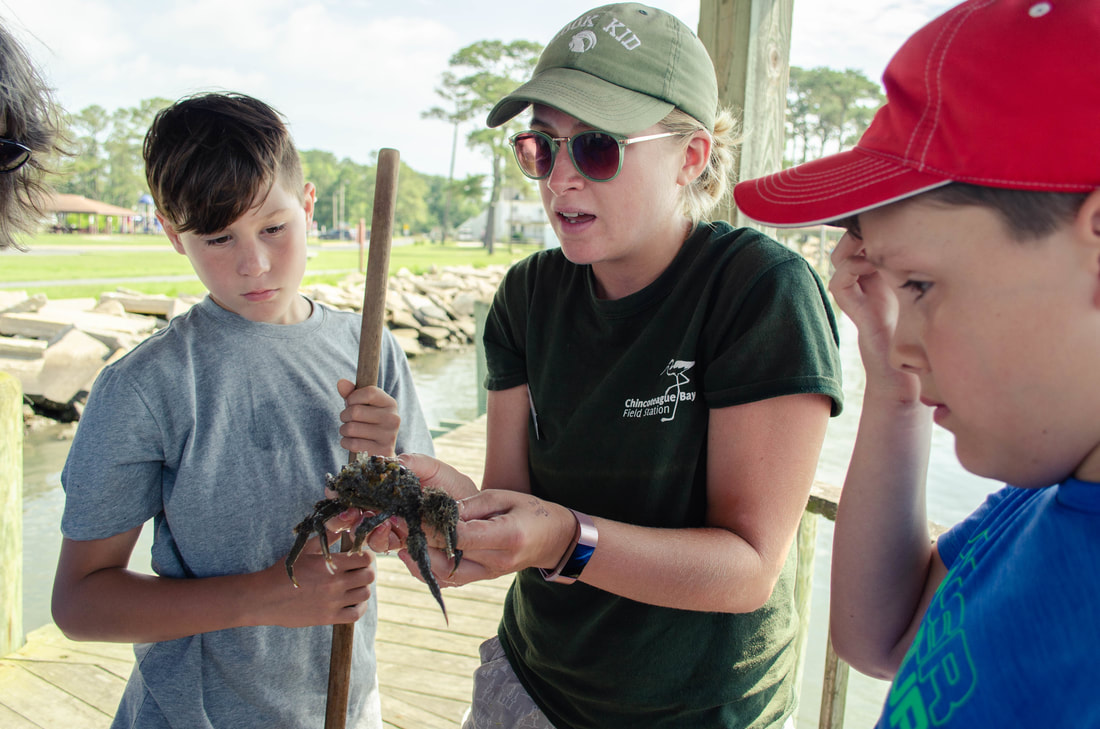
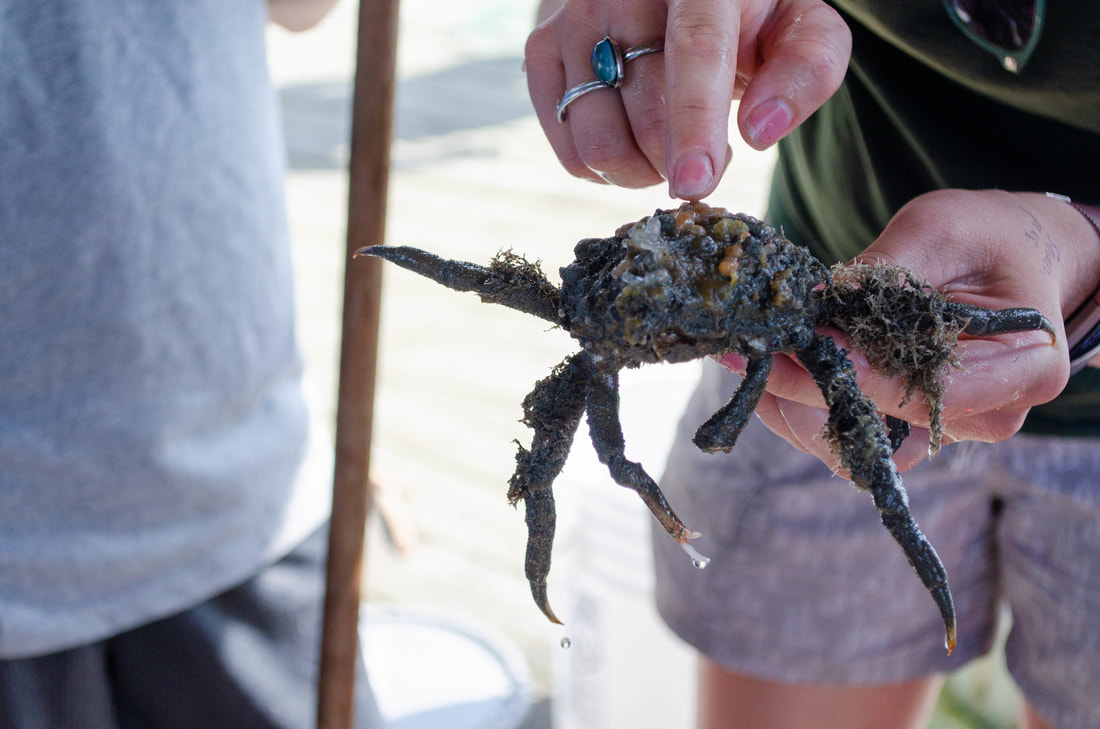
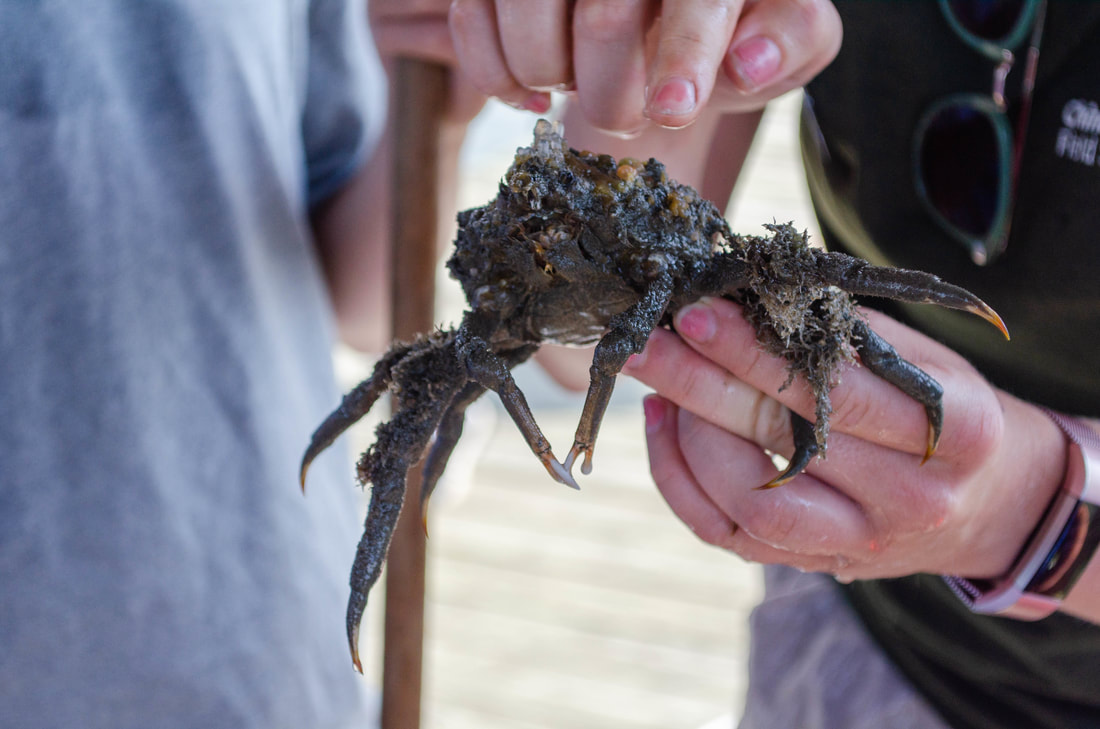
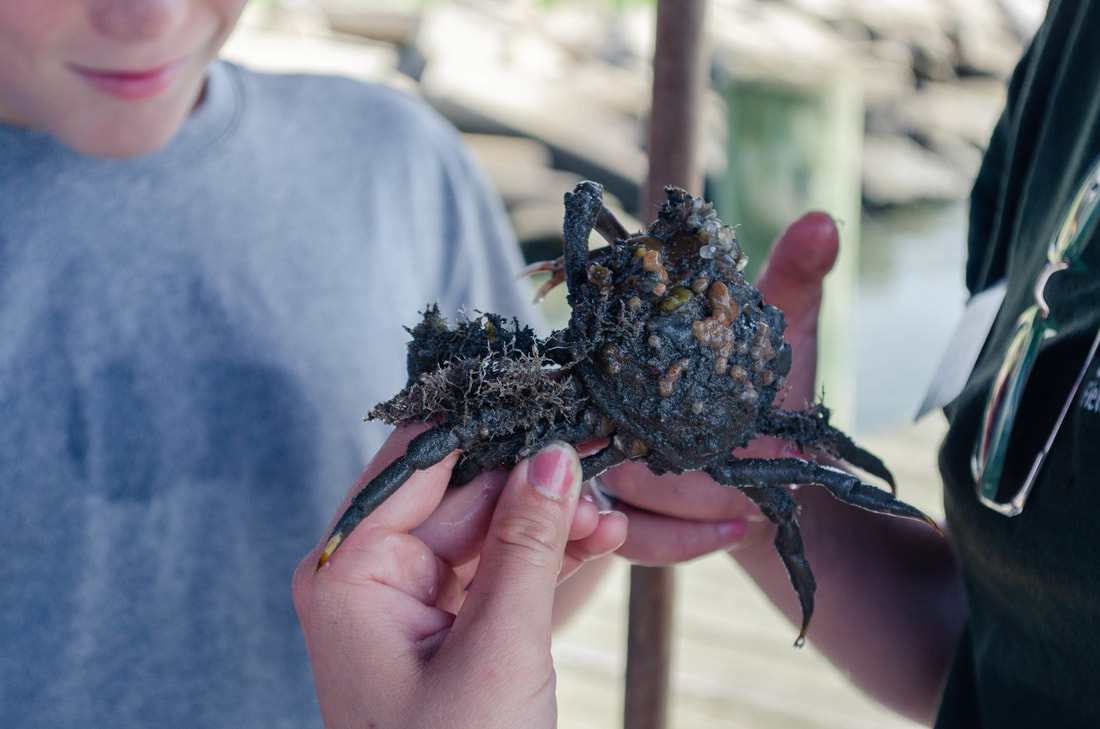
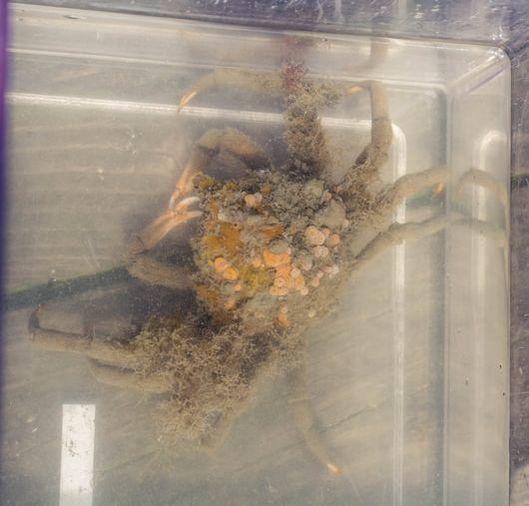
 RSS Feed
RSS Feed

